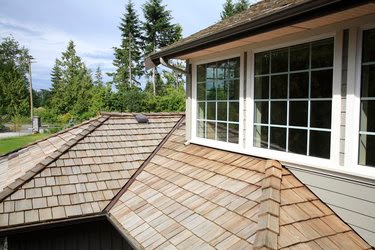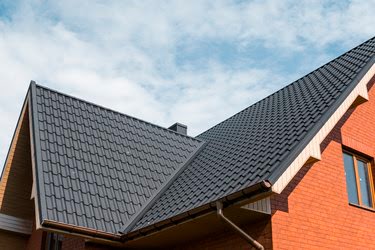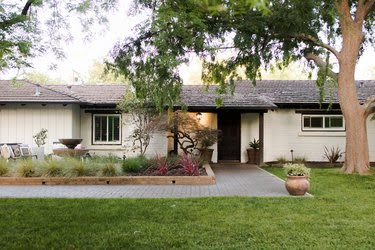Quck answer
When choosing roof shingles for your home, consider the following factors:
1. Material: Decide between asphalt, wood, metal, or slate shingles based on durability, cost, and appearance.
2. Style: Choose a shingle style that complements your home’s architecture and enhances its overall aesthetic.
3. Color: Consider the climate, surroundings, and personal preference when selecting a shingle color that matches your home.
4. Lifespan: Evaluate the longevity of different shingle options and select one that provides the desired durability and maintenance level.
5. Budget: Determine your budget and find shingles that offer the best combination of quality and affordability.
By considering these factors, you can choose the right roof shingles that meet your home’s needs and enhance its overall value and curb appeal.
When it comes to installing a new roof on your home, it’s important to consider both the performance and aesthetics of the roof shingles. While you want your roof to look nice, you also need it to provide protection and durability without breaking the bank. Your local roofer can offer advice on which shingles will work best for your climate and home, but it’s helpful to have an understanding of the different types of roofing shingles beforehand.
3-Tab Asphalt Roof Shingles

Image Credit:
Ratchat/iStock/GettyImages
3-Tab asphalt shingles are a popular choice for residential roofs in America, making up 80 percent of installations. These shingles are made of asphalt and fiberglass and have a lifespan of about 20 years. They are rated for good or better wind-resistance, with some able to withstand winds up to 150 mph. They are fire-resistant, easy to install, and relatively lightweight. Additionally, they are the most affordable option, priced at around $85 to $150 per square (100 square feet). Modern asphalt shingles also come in a variety of colors.
However, asphalt roof shingles have some downsides. 20 years is considered a relatively short lifespan in the roofing industry. While they are recyclable, not all areas have asphalt shingle recycling centers. This limits their eco-friendly options. Additionally, in humid climates, asphalt shingles can develop algae growth, so it’s advisable to choose algae-resistant shingles if you live in such an area.
Pros:
- Affordable
- Available in various colors
- Relatively lightweight
Cons:
- Not recyclable in all areas
- 20-year lifespan
Best Uses:
- Suitable for fast and budget-friendly installations
Architectural Roof Shingles
Visit Page
https://go.skimresources.com
Image Credit:
Home Depot
Architectural shingles can be thought of as an upgraded version of asphalt shingles. They are made from the same materials but have an additional layer for enhanced durability and a more textured appearance. Architectural shingles also focus on aesthetics, as the extra layer gives them unique sizes and shapes, adding dimension to your roof. They have a longer lifespan than basic asphalt shingles, lasting around 30 years.
Apart from the price, architectural shingles share similar characteristics with asphalt shingles. However, the longer lifespan comes at a higher cost, ranging from $150 to $500 per square.
Pros:
- Aesthetically pleasing
- More durable than standard asphalt shingles
- Potentially longer warranty
Cons:
- More expensive than standard asphalt shingles
- Not recyclable in all areas
Best Uses:
- When you want the qualities of asphalt but with a more high-end appearance, it is an excellent choice.
Wood Roof Shingles

Image Credit:
Solidago/iStock/GettyImages
Wood roof shingles are truly beautiful and offer a lightweight roofing option. You can choose between shingles or shakes, which are shingles with a rougher, less uniform cut. Wood shingles are commonly made from cedar and redwood, but some are also made from pine or spruce. With proper care, wood shingles can last for about 25 years and can be cleaned and brightened using various chemicals and a garden hose. Shingles made from wood are also highly sustainable and environmentally friendly.
The cost of wood shingles is around $350 to $450 per square, but it can be even higher. Since natural wood does not provide fire protection, you may need to choose shingles that are treated for fire-resistance. In some areas, wood shingles have been banned due to the fire hazard, so wood may not be an option for you. Additionally, you will need to regularly treat wood roof shingles with preservatives to prevent them from drying out, cracking, or warping.
Pros:
- Very attractive
- Environmentally friendly
- Slightly more durable than asphalt
Cons:
- Requires high maintenance
- Not fire-resistant
- Banned in some areas
Best Uses:
- Wooded lots where blending in is desired
- Applications where environmentally friendly materials are of great importance
Slate Roof Shingles

Image Credit:
Moniek Spaans/iStock/GettyImages
If you want a roof that will last a lifetime, slate is the ideal choice. Slate roofs can last for 100 to 150 years or even longer and are extremely durable. Slate is a natural stone that can resist hail, heat, moisture, and fire. It can also withstand heavy snow loads.
However, slate does have some downsides. One major drawback is its weight. The weight of the slate may require additional support structures to be added to your roof. Additionally, installing slate is not a do-it-yourself project and requires professional installation by someone experienced in working with slate specifically.
Slate is also one of the most expensive roofing options available. It can cost anywhere from $1,000 to $2,000 per square. These figures do not include any additional costs for reinforcing your roof, which can further increase the expenses.
Pros:
- Longest-lasting roof material
- Elegant, high-end look
Cons:
- Expensive
- Very heavy and may require additional roof support
Best Uses:
- Choose slate if you never want to worry about replacing your roof again
Metal Roof Shingles

Image Credit:
Volodymyr Shtun/iStock/GettyImages
Metal roofing shingles are made of steel with special coatings and can last for 50 to 75 years. These shingles are designed to mimic the appearance of other materials such as slate or wood, providing an aesthetically pleasing option without the weight or drawbacks of those materials. Metal roofs reflect a significant amount of light and heat, so they do not increase cooling costs as commonly believed. Any heat they do absorb dissipates quickly.
In order to save money, it is possible to install stamped metal materials over existing shingles, as long as the shingles are in good condition. Metal roofs are lightweight and adding a second roof will not create too much weight. Additionally, metal roofs offer superior fire protection and wind-resistance.
However, rain can sound louder on a metal roof. Therefore, if the roof is not being installed over existing shingles, it is recommended to add a layer of insulation underneath. Stamped metal roofing is on the higher end of metal roofing prices, ranging from $800 to $1,200 per square.
Advantages:
- Long lifespan
- Lightweight
- Energy efficient
Disadvantages:
- Expensive
- Relatively difficult to install
Best Uses:
- Ideal when a lightweight roof is required
- Contributes to energy-efficient buildings
Clay Roof Tiles

Image Credit:
Hunker in Partnership With Acme Real Estate
Clay roof tiles are popular on stucco homes and in the American Southwest. They provide a Spanish or Italian vibe, depending on the home’s architectural features. Clay is naturally energy efficient and environmentally friendly. It is also resistant to fire, rot, and insects. However, there are some drawbacks.
Clay tiles are extremely heavy and often require additional roof support, similar to slate tiles. While a clay roof can last for 50 to 100 years, the individual tiles can be brittle and easily break. Therefore, it may be necessary to frequently replace broken tiles. Additionally, clay roof tiles come with a high price tag, ranging from as low as $300 to as high as $1,000 per square.
Advantages:
- Enhances aesthetics
- Environmentally friendly
Disadvantages:
- Heavy and may require additional support
- Can be expensive
- Individual tiles may break frequently
Best Uses:
- Perfect for creating a Spanish or Italian look
- Suitable for energy-efficient homes
Solar Roof Shingles
Visit Page
https://www.tesla.com

Image Credit:
Tesla
Solar shingles are a relatively new roofing option. They provide protection from the weather and capture solar energy to power your home and save energy. It is important to consult a professional to determine the suitability of solar shingles for your location, roof direction, and shade levels. Professional installation is recommended due to the combination of roofing and electrical skills required.
Solar shingles are expensive, ranging from $1,400 to $1,900 per square. However, it is not necessary to cover the entire roof with solar shingles. They work best on south-facing roofs and are often used in combination with standard shingles. Covering the entire roof with solar shingles is impractical and costly, which is why most homeowners use them only for specific areas. Solar shingles have a lifespan of 20 to 25 years.
Advantages:
- Provides solar energy for your home
- More aesthetically pleasing compared to traditional rooftop solar panels
Disadvantages:
- Costly
- May not be suitable for certain households
Ideal Applications:
- Solar shingles work best in areas with ample sunshine where they can maximize energy production
Composite Roofing Shingles

Image Credit:
Codi Ann Backman
Similar to solar shingles, composite shingles are relatively new to the roofing industry when compared to other roofing materials. These shingles are made of polymer, rubber, or plastic and come in a wide range of color options. Composite shingles can also imitate the appearance of various other roofing materials, such as wood and slate. They are durable, with a lifespan of over 50 years, and are resistant to fire, UV rays, and moss.
Composite shingles typically cost between $400 and $600 per square, but caution should be exercised when looking for bargains. Low-quality composites have a tendency to absorb water and then deform when exposed to freezing and thawing cycles. Poorly manufactured tiles also have a lifespan of only 20 years instead of the expected 50. Additionally, finding a local roofer who is knowledgeable or experienced in installing this relatively new roofing material may pose a challenge.
Advantages:
- Requires no maintenance
- Resistant to impacts
- Wide range of colors and styles available
Disadvantages:
- Finding a roofer experienced in installing composite shingles can be difficult
- Low-quality shingles can cause issues
Ideal Applications:
- Excellent at replicating the appearance of slate or wood shingles without their drawbacks

